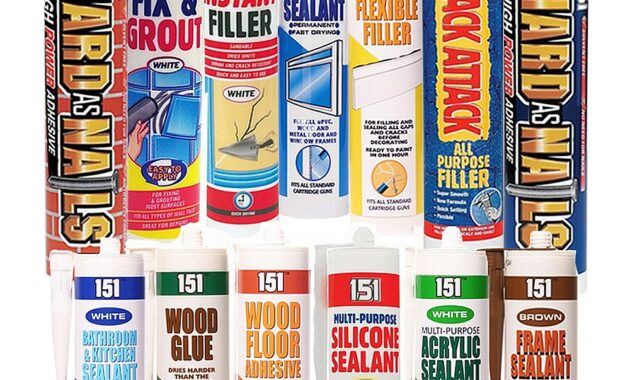Whether you’re undertaking a new building or renovation project, you will have to deal with sealant joints, and they deserve the necessary attention to preserve their effectiveness. Therefore, timely maintenance and periodic replacement of such joints are important. In the current construction marketplace, there are various types of construction sealants, each with its strengths and weaknesses.

Here are the various common types of construction sealants, and their uses:
Acrylic Sealants
Though not as adhering as Polysulfide sealants, Acrylic sealants also offer stable UV solutions to mastic sealant contractors. However, they are a little bit cheap and offer a life expectancy of 5-10 years. These sealants can comfortably withstand water, making them suitable for exterior use. Also, they aren’t prone to shrinkage guaranteeing you reliability.
The major downside of acrylic sealants is that they don’t offer flexibility when it comes to application. So, restrain from using them where significant movement is expected.
Water-based Latex
Water-based latex sealants are commonly used in residential constructions. Over the recent years, this sealant type has gained massive popularity among its users because of being safe and easy to use. Also, they can easily stick on many surfaces. And that’s not all, water-based latex sealants are also paintable, leaving the surface visually attractive.
These sealants are ideal for small gaps, and spaces with minimal movement. But due to their short service, they are better for interior, than exterior applications. Plus, you should avoid using them for waterproofing purposes as they tend to shrink and will eventually pull away creating gaps.
Polysulfide Sealants
If you’re looking for a sealant that offers flexible solutions for commercial projects, the polysulfide Sealants will give you great service. Also known as Polysulphide mastic sealant, this type can comfortably accommodate the elasticity of joints even in low temperatures. They barely shrink, and are UV radiation resistant, making them suitable for exterior and underwater applications.
Because of their effectiveness, polysulfide sealants are expensive. But, they offer a life expectancy of 15-20 years, which honestly compensates for the price.
Polyurethane sealant solutions
Polyurethane sealants are among the most commonly preferred sealants by building contractors. They are versatile in applications and are strongly adhesive, abrasive and shear-resistant. These sealants are also easy to apply, that too with little surface preparation.
The polyurethane sealants are affordable, but can easily degrade when exposed to UV light. So, they are best used in the interior.
Butyl sealants
If you’re working on a tight budget, you might want to consider using butyl sealants. They’re not only affordable but can also be used on various surfaces. These sealants are adhesive and have a stringy consistency, which makes them difficult to apply. Therefore, it’s best if you use butyl sealants on less demanding constructions as they may take too much of your time. Also, avoid using them in places with sheering movements. Like the acrylic sealants, the butyl sealants will offer you 5-10 years of reliable service.
Silicone sealants
Silicone sealants are best known for home repairs and improvement. They are expensive, but with admirable flexibility and outstanding durability. Most of them offer a 10-20 years life expectancy, which is worth the price. These sealants can be easily modified to suit specific purposes. In homes, you will find silicone commonly used in bathrooms. However, they might stain some surfaces, or accumulate dirt over time.
Well, these are the most commonly used construction sealants. We hope this helps you make the right choice for your building/renovation project!